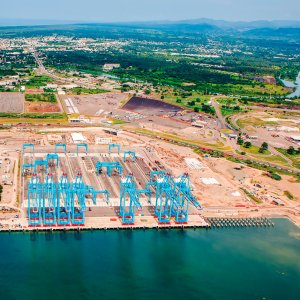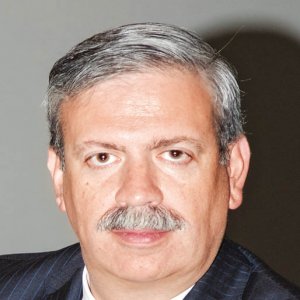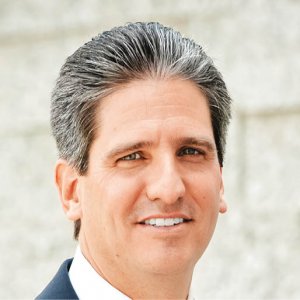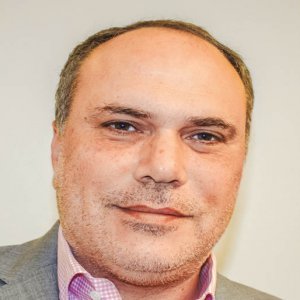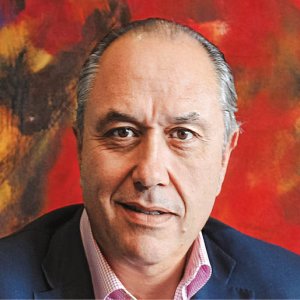Efficient Space for Efficient Workers

STORY INLINE POST
Architectural design consultancy spAce has noticed that most offices are designed by architects with no background in the science of productivity and happiness. It wants to change that. “We try to deeply understand the companies we work with and their culture,” says Juan Carlos Baumgartner, the company’s Managing Director. “Happiness has become an obsession for us.”
To get to the crux of the matter, SpAce created a research department that collaborates with institutions and researchers who specialize in space efficiency. The firm has an alliance with the head researcher of MIT’s media lab, which focuses on the future of education and strives to discover how the environment impacts the way people process and store information. It also has an alliance with Deft University in the Netherlands that is especially concerned with wellbeing and its relationship to the physical environment.
Deft has a theory called Positive Emotional Granularity that researches people with a deeper capacity to share feelings than the average person. SpAce is developing this theory with Deft and is in the process of creating an alliance with Harvard to delve even deeper into the topic with the prestigious academic institution. The firm also has partnered with an Australian lab that analyzes the impact different lighting can have on performance.
The company uses electronic tools to measure happiness, performance, health and engagement. It employs a system that allows it to interview 10,000 people in 15 minutes. “This gives us an amazing, big picture of the client’s business,” says Baumgartner. SpAce also can use its database for cross-referencing, dividing people into categories such as age and company areas. “This lets us find groups of people within the company that are happier than the rest and we can then analyze the reasons behind that,” he says.
The trend of open offices is geared toward raising employee satisfaction and productivity but this is only a small piece of the puzzle. “The problem is that Mexico does not have enough experts who focus on evidence-based design strategy. SpAce is basically the only firm in the country completely dedicated to building high- performance spaces and to workplace education,” says Baumgartner.
Many countries and architects are adopting the open office concept because it is less expensive than closed areas, says Baumgartner. They must be combined with a set of alternative spaces. People cannot arbitrarily be arranged into an open-space environment without being given casual meeting spaces and areas where they can concentrate. If they are only given open offices, employees feel they are losing more than they are gaining and it detracts value from their work, says Baumgartner. “Space can be a powerful tool for an organization as long as time is invested into understanding the company’s culture and vision.”
Because all companies have a different opinion on productivity, spAce finds it more efficient to connect the benefits achieved to happiness levels. To measure results, the firm identifies basic elements within each company that best reflect productivity. It then measures the impact design brings to these factors.“Our work impacts deep layers of the company. Our 20-year experience has proven that our projects can increase engagement from 25 to 30 percent, on average. Satisfaction is equally improved by up to 40 percent,” Baumgartner says. Both elements reap more profit for clients as employees are willing to give more to the company.
“One of the reasons we have a great deal of success is because we take the time to adapt our designs to their needs. Our mission is to give our clients what they need to complete their work and it is often not an office. Beauty and functionality alone are not enough to create significant change,” says Baumgartner.
An efficient workplace design also can produce savings. Space helps reduce costs by using fewer square meters and by defining internal mobility. Effectively, only 70percent of a space is used because offices are empty when employees are in meetings or with clients. “Our tools can measure how often people leave the office to define the company’s mobility profile,” says Baumgartner. “We find that some people only use their office space briefly to check emails or arrange meetings and they do not truly need a workstation.”
Based on the company’s profile, spAce offers alternative spaces such as lounges or bars where people can drink coffee and check their emails. Employees who are frequently in meetings with clients may only need the workspace to make friends and feel like they are part of the company’s bigger picture, Baumgartner says. “It is more efficient to invest in common areas than workstations that will be underutilized, or to implement a hot-desking system. Some of spAce’s most innovative ideas include working cafes, in which people do not have a defined working space. Offices can implement open terraces and install tables so employees can sit wherever they please.”
Baumgartner remarks that working with international companies in Mexico is easier because they come from countries with priorities similar to workplace happiness. “Clients from Europe and the US do not need to be coaxed into seeing the importance of space design and the value of the investment. When we decided to expand into Latin America and created our headquarters in Mexico, our first client in the region thought we were crazy for talking about topics like sustainability. Our use of space was confused with practices more akin to Feng Shui because the concept was completely new,” Baumgartner says.
In addition to taking on corporate clients, spAce carries out four or five pro bono projects a year. “As our objective is to transform spaces and the way they impact people, we decided that our best bet was to bring added value to education. The hardest part is finding suitable pro bono clients because we need them to have enough resources to build the project and to avoid wasting time in designs that will never become a reality,” says Baumgartner.
SpAce’s main focus is education because the sector is going through a major revolution. Mexico’s 200-year-old system is being reformed but its physical aspect remains, says Baumgartner. He believes an educational revolution cannot happen without a deep change in space design. Many studies have proven that the worst way to learn is by facing all the desks forward with a teacher at the front, he says.
“We strive to shrink the gap between the educational system and the real world,” says Baumgartner. Mexican universities like UNAM are facing a deep infrastructure gap as the physical environment has not changed in 50 years. This implies that students are studying in spaces not connected to where they will be working after graduation. “The biggest problem is that corporate industries evolve quickly, while other sectors move more slowly,” he says. “The only way to reduce the gap is by pushing those that are at the forefront of design to bring the educational system closer to current technology and workplace trends. It is not easy as many teachers are not open to changing their paradigm but the generations to come have new mentalities that will soon force the system to shift.”
